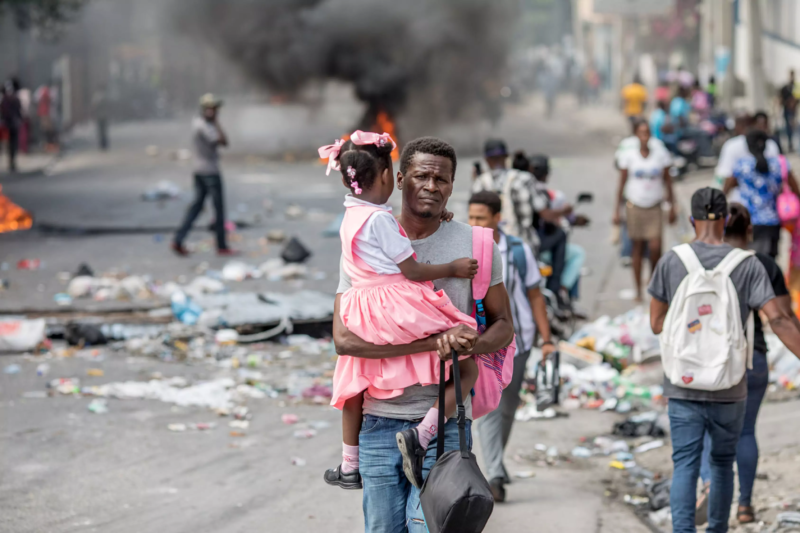New Bipartisanship Over Haiti is Promising
The sudden U.S. presidential unity on Haiti is promising, because Haiti has long been the subject of bitter partisan bickering in Washington.
This post is also available in: Français
“Nou bouke. Nou bouke. Nou bouke. Leve kanpe.”
The woman yelling these words in Creole was captured on camera during a protest under the hot, midday sun, somewhere in Haiti, in mid-July: “We are tired. We are exhausted. We have had it. It’s time to rise up.”
Her cry was followed by another, and then another, from the swell of upset, shaking bodies, all crying out that Haitians could no longer accept the country’s constant state of crisis. Each shout ended with a passionate call-to-action: “Leve kanpe!” or “Rise up!” The teledjol, or gossip mill, being what it is in Haiti, the short video quickly went viral.
The protests, attended by a few hundred people in the Haitian cities of Saint-Marc and Jacmel, began days after Haiti’s attention, and indeed the world’s, had been captured by events in Sri Lanka, where hundreds of thousands had joined a bloodless revolt against fuel hikes, inflation, corruption, and inefficiency that ultimately ousted the country’s president, Gotabaya Rajapaksa. Haitians had been protesting regularly since 2018, but have not yet forced such a dramatic outcome.
In July 2018, massive, widespread protests erupted across the country in response to fuel subsidies cuts, and then shifted to express more generalized outrage at government corruption and impunity. Many called on then-President Jovenel Moïse to resign, but even these unprecedented mobilizations did not lead to systemic change. There was little recognition, whether from Moïse’s government or the international community, of the harm his rule had inflicted on the Haitian economy and political system. He remained in office, secure in his support from countries like the United States, as well as rich, powerful Haitian oligarchs.
Fast forward to today, and violence, impunity, and economic turmoil have only gotten worse, especially in recent months, as heavily armed criminal gangs have extended their territorial control. Currently, these violent groups control more than 50 percent of Haiti’s land. Meanwhile, the government of acting Prime Minister Ariel Henry, who took over after Moïse was assassinated in July 2021, has stood idly by as disaster engulfs the country. And since mid-August, further protests against rising insecurity and high fuel and food prices, as well as calling for Henry to step down, have erupted in most major cities of the country. The public’s anger is palpable.
There are reasons to believe mass mobilizations could have a different outcome today. Since March 2021, Haitian civil society has been working hard to develop innovative, local solutions to the country’s problems, including a blueprint for a Haitian-led transition that could well forge a new path for the country. For that plan to work, the changes will need to be profound and transformative, and the process of implementing them as inclusive and empowering, as possible. So far, though, Henry’s administration seems more interested in protecting its current power than in developing real, consensus-based solutions.
[…]
The sudden U.S. presidential unity on Haiti is promising, because Haiti has long been the subject of bitter partisan bickering in Washington.
The worldwide outpouring of support for Haitians from governments and ordinary citizens has been extraordinary. But this heroic phase of the emergency response is drawing to a close.
After a 7.0 magnitude earthquake struck Haiti, the aftershock reached China in ways that few anticipated.The earthquake forced Chinese leaders to navigate the tricky politics of disaster relief.
 Valerie Baeriswyl / AFP / Getty Images / Council on Foreign Relations
Valerie Baeriswyl / AFP / Getty Images / Council on Foreign Relations